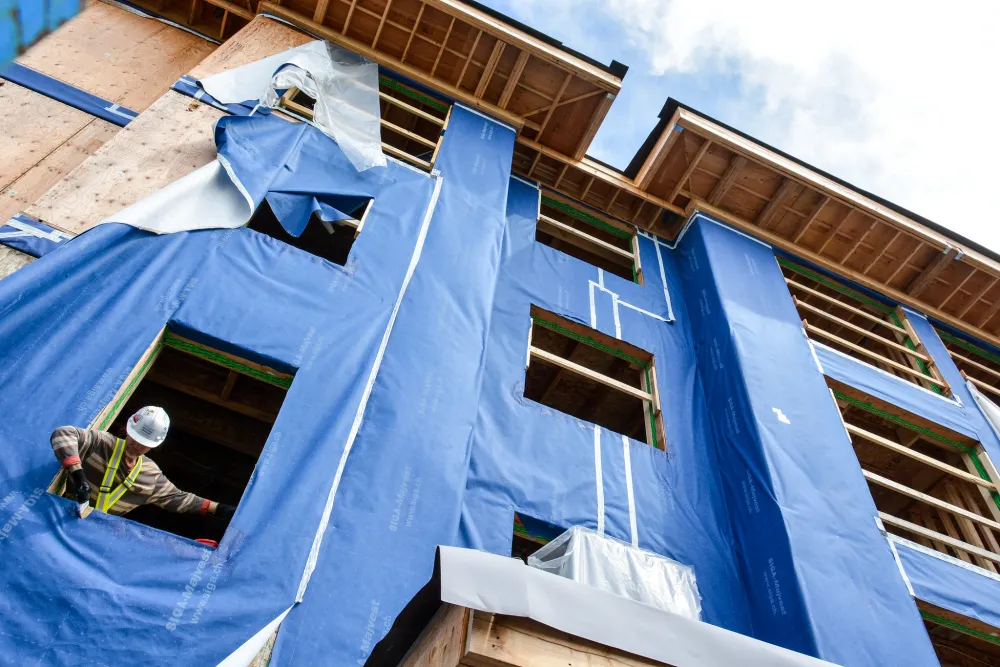Warnings on the urgency with which we need to act to avoid the worst impacts of climate change are multiplying. A 2019 report found that Canada’s climate has warmed twice as much as the global climate. While unsettling, the good news is that Canadians are sitting up and taking notice: public-opinion data shows that Canadians want to see their leaders take this threat seriously.
The 185 signatories of the Paris Agreement, including Canada, are engaged in the process of changing how they produce and use energy to reduce emissions in every sector of their economies. This transition will generate a $26 trillion low carbon economy that will create 65 million jobs by 2030 to supply the energy sources, products and services of our decarbonized, safe global future. This is the opportunity to create a bright future for Canadians where clean energy drives a prosperous, connected economy and human activities stop contributing to climate change. We need to create a future built on bold and inclusive solutions that improve the quality of life for all people living in Canada.
Canadians in every corner of the country are already building the economy of tomorrow. According to Canada’s Economic Strategy Table on Clean Technology, ‘’clean technology is emerging at an explosive rate.’’ In 2016, 274,000 Canadians had clean tech jobs developing clean resources, e-mobility, energy storage, fuel cells, industrial bio-products, renewable energy, smart grid, and water technologies that will reduce environmental impacts in every industry. These are great jobs with an average annual salary of between $80-$90K. The same year, the sector generated more than $11.5 billion in revenue through exports. These are good jobs, and we can create more of them.
To build on this success and realize a clean competitive economy, we need a regulatory environment that responds to the opportunities of the decarbonizing economy. Below, we take a look at some of the key tools at our disposal to ensure we are positioning ourselves to benefit from a healthy environment and a strong economy.
Promoting economy-wide innovation by putting a price on pollution
A low-carbon future requires a shift in behaviours from households and businesses. We can trigger this shift by applying a price on pollution which increases the demand for lower carbon solutions. As opposed to regulations, a price on pollution provides flexibility and is therefore a powerful way to increase the demand for a suite of innovative technologies, further boosting our thriving clean tech sector. In addition to leaving freedom for families and businesses to make the choice that works best for them while reducing pollution, a well-designed price makes sure no one gets left behind, and uses the revenue to offer rebates to households.
Establishing a new foundation for competitiveness in fuel markets
Meeting Canada’s emissions reductions target requires reducing our consumption of fossil fuels and, on our way there, cleaning the fuels we burn. By requiring that fuel suppliers reduce their products’ carbon intensity, a clean fuel standard triggers the demand for existing and emerging low-carbon fuel technologies like biofuels (such as ethanol, biodiesel, and renewable diesel), synthetic fuel, biogas, hydrogen, and electricity to power our cars, fuel our industrial processes and heat our homes. In turn, increasing the penetration of low-carbon fuel will increase low-carbon fuel production capacity and investments in delivery systems to transport low-carbon fuels to markets and fuel terminals. In fact, recent modelling has shown that, by 2030, a clean fuel standard would increase annual economic activity by $4.9 billion to $5.6 billion and create up to 31,000 jobs for the skilled workers needed to build, operate and supply these new clean fuel facilities.
Unlocking new economic opportunities for Indigenous communities by championing clean energy
The transition to a low carbon economy holds tremendous potential for all Canadians, including the 170 remote Indigenous communities in Canada. Many of these communities are dependent on diesel for heating and electricity generation. Reducing reliance on diesel fuel by advancing clean energy and energy efficiency is one way to address energy security, health, and environmental issues facing remote communities. In addition, championing clean energy systems allows these communities to pursue new economic development opportunities and advancing self-determination. Jurisdictions that are providing policy and funding opportunities for these communities to pursue their own clean energy initiatives are seeing an accelerated shift away from diesel reliance. Successful partnerships between communities and utilities in communities like Old Crow, Yukon, Fort Chipewyan, Alberta, and Gull Bay, Ontario are leading to innovative new solar projects that will see diesel consumption reduced by over 25 per cent in these communities.
Boosting job growth in the buildings sector while delivering more efficient homes
In a low-carbon economy, buildings will be highly energy efficient, rely on clean electricity and renewable energy, and be smart and sustainable. The transition to more efficient buildings generates a demand for a skilled workforce, including contractors, tradespeople, building inspectors, municipal officials, designers, engineers, architects, builders, building operators and managers to ensure quality construction. There are about 1.3 million Canadians employed in the residential, commercial, and industrial construction industry across Canada. It is estimated that the implementation of our current national climate plan would create 118,000 additional jobs if we were to meet the energy efficiency commitments it lays out for the built environment. Pre-fabrication can move many of these construction jobs indoors, which will help improve quality, accelerate delivery, and simplify permitting. This shift from the construction site to the factory floor can also improve working conditions and simplify training requirements, thus creating good manufacturing jobs near our population centers and helping relieve some of the labour pressure faced by the construction industry.
Investing in people to create a low-carbon economy
As our economy reduces its consumption of fossil fuels, we need to support workers and their communities in incumbent industries and enable them to be part of the clean energy transition. Any strong climate plan needs to include supporting families to seize on the opportunities of the growing low carbon economy. A price on pollution, a clean fuel standard, investing in renewable energy and energy efficiency in communities and buildings are so many ways to enable the diversification and growth of local economies across the country in line with our climate objectives.
Check out the other blogs in this series:
This election, let’s plan for a climate future we can all get behind








